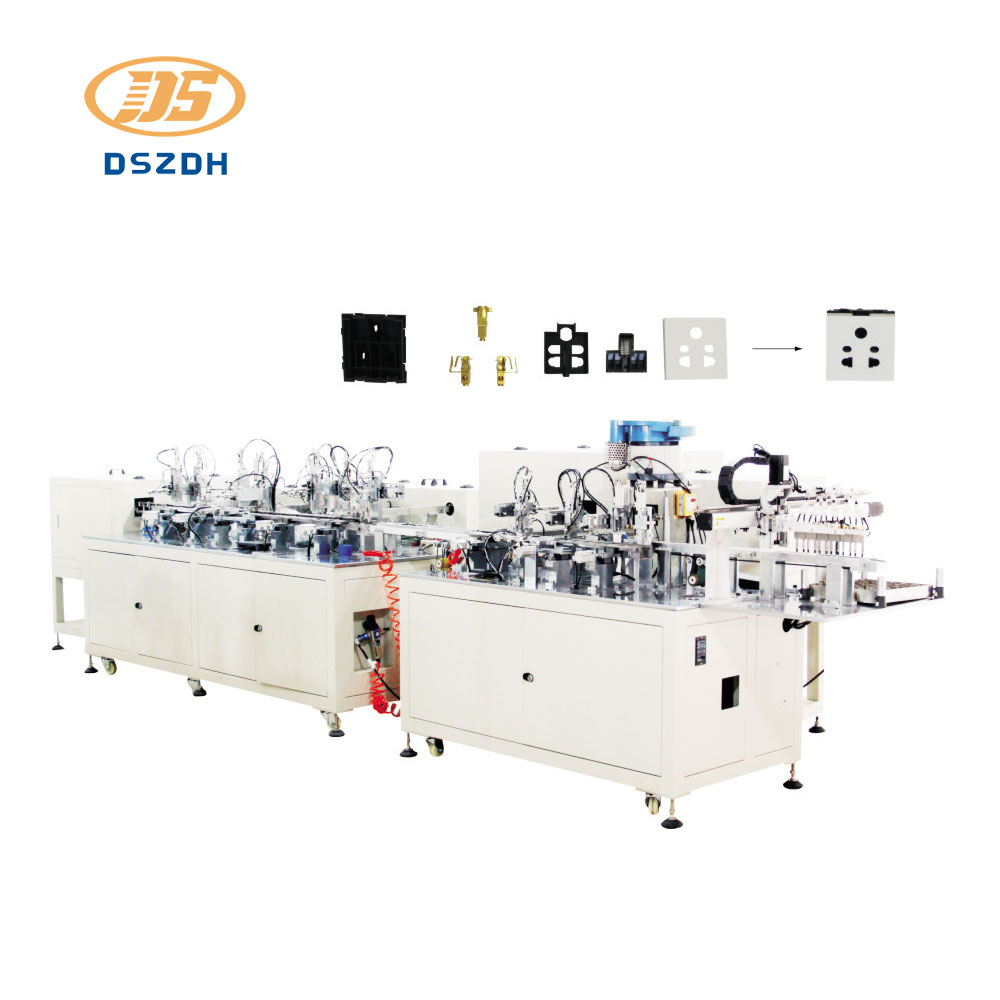Ensuring Excellence: Integrating Quality Control with Three Hole Socket Automatic Assembly Machines
2024-04-03
In the realm of manufacturing, ensuring the highest standards of quality is paramount. Whether it's consumer electronics or industrial equipment, every product must meet rigorous specifications to uphold the reputation of the brand and satisfy customer expectations. One critical aspect of maintaining quality in manufacturing processes is effective quality control. Let's explore how quality control integrates seamlessly with the operations of a Three Hole Socket Automatic Assembly Machine, ensuring excellence in every finished product.
1. Real-Time Monitoring: Quality control begins at the inception of the assembly process. Three Hole Socket Automatic Assembly Machines are equipped with an array of sensors, detectors, and monitoring systems that perform real-time checks on various parameters throughout the assembly process. These sensors detect deviations or abnormalities in assembly, allowing for immediate corrective action to be taken.
2. Component Verification: Before assembly begins, the machine verifies the integrity and correctness of each component being used. Optical sensors or cameras may be employed to inspect components for defects, damage, or inconsistencies. Any faulty components are automatically rejected, preventing them from compromising the quality of the final product.
3. Precision Assembly: As the assembly process progresses, quality control measures ensure that each component is precisely positioned and secured according to the predefined specifications. Advanced robotics and servo systems manipulate components with exacting accuracy, minimizing the risk of errors or misalignments.
4. Functional Testing: Once assembly is complete, the finished sockets undergo rigorous functional testing to validate their performance. Automated testing equipment evaluates key parameters such as electrical conductivity, mechanical integrity, and dimensional accuracy. Any deviations from the specified criteria are flagged for further inspection or rework.
5. Data Logging and Analysis: Throughout the entire manufacturing process, data logging systems capture and store a wealth of information related to assembly parameters, production metrics, and quality control checks. This data is analyzed in real-time or post-production to identify trends, patterns, or anomalies that may require attention. Continuous monitoring and analysis allow for ongoing optimization of the assembly process and quality control procedures.
6. Error Detection and Alerting: In the event of a deviation from the desired quality standards, Three Hole Socket Automatic Assembly Machines are programmed to alert operators or supervisors immediately. Visual or audible alarms notify personnel of any issues that require intervention, enabling prompt resolution and preventing the production of non-conforming products.
7. Traceability and Documentation: Quality control measures extend beyond the manufacturing floor to encompass traceability and documentation. Each finished socket is assigned a unique identifier or barcode that facilitates traceability throughout the supply chain. Comprehensive documentation records the entire manufacturing history of each product, including assembly parameters, testing results, and any deviations encountered.
8. Continuous Improvement: Quality control is not a static process but rather a continuous journey of improvement. Three Hole Socket Automatic Assembly Machines facilitate continuous improvement initiatives by providing valuable insights into process performance and quality trends. This data-driven approach enables manufacturers to identify areas for enhancement and implement corrective actions to drive ongoing improvements in quality and efficiency.
In conclusion, quality control is an integral part of the operations of Three Hole Socket Automatic Assembly Machines, ensuring that every finished product meets the highest standards of excellence. By integrating real-time monitoring, precision assembly, functional testing, data analysis, error detection, traceability, and continuous improvement, these machines uphold the reputation of brands and satisfy customer expectations. As technology continues to advance, we can expect further innovations in quality control measures, driving even greater levels of excellence in manufacturing operations across industries.


